Baomo Garden, located in Guangzhou's Panyu District, approximately 35 kilometres from the city centre, covers an area of around 100,000 square metres. This traditional Chinese garden showcases classic Chinese architecture and art. Originally built during the late Qing dynasty, Baomo Garden was designed to complement the nearby Temple of Lord Bao, situated in the eastern part of the garden. Lord Bao Zheng, a renowned official of the Song dynasty, was a man of integrity and high moral standards. He served as the governor of Duanzhou in Zhaoqing and was held in high esteem. Deified by the people, who sought his blessings for good fortune, Baogong Temple was built in his honour. The garden was unfortunately destroyed in 1950, but was later reconstructed in 1995. It is a place I highly recommend visiting during your stay in Guangzhou. Baomo Garden boasts a wide variety of attractions, which would be difficult to list in full. In this article, I highlight some of the most captivating features that caught my attention.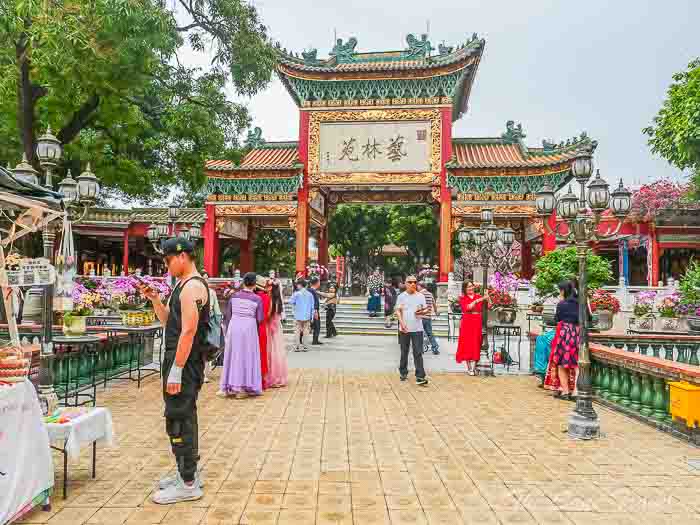
What Baomo Garden is about
Baomo Garden is a popular tourist destination with a 4a-level rating, renowned for its traditional culture and architecture of the Lingnan region in Southern China. The garden features a variety of cultural collections, buildings, and landscapes, such as the Longtu Pavilion, the Zhao Tailai Collection Hall, and the Confucius Cultural Centre. Additionally, it boasts several ponds, including turtle ponds, release ponds, koi fish ponds, and lotus ponds, as well as a diverse collection of plants and Lingnan bonsai. In the summer, visitors can enjoy the sight of lotus flowers blooming in the lotus pond.
Screen Wall
Upon entering the garden, visitors are greeted by the Tu Yan He Ming Wall, adorned with intricate carvings of birds, insects, flowers, and trees. This screen wall, constructed from over 30,000 dark bricks, shields the garden from view. The carvings on its facade symbolise vitality and prosperity, featuring phoenixes, pheasants, dragonflies, pine, bamboo, willow, and peony. On the reverse side, there are calligraphy carvings by Wang Xizhi, a renowned calligrapher from the Jin dynasty. Designed and created by artist He Shiliang, this masterpiece showcases traditional South Chinese brick-carving techniques, with patterns of banana trees, flying phoenixes, and animals that are rendered in a lifelike manner. The overall design of the wall is harmonious, exhibiting a striking three-dimensional quality.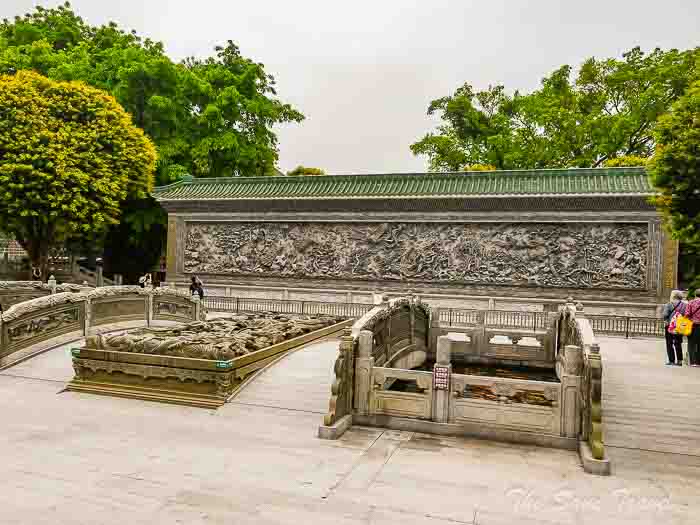
Scenic areas of the garden
The garden is home to several picturesque areas for visitors to enjoy. Scattered throughout the garden are sculptures crafted from materials such as brick, porcelain, and wood. Notable sculptures include the porcelain inverse relief Qingming Festival by the Riverside, the brick-carved Wall of Flowers and Birds, and the bronze figure of Confucius on Litchi Island in the Treasure Pavilion. Some of the botanical highlights include the rose garden, orchid garden, lotus pond, and purple bamboo grove.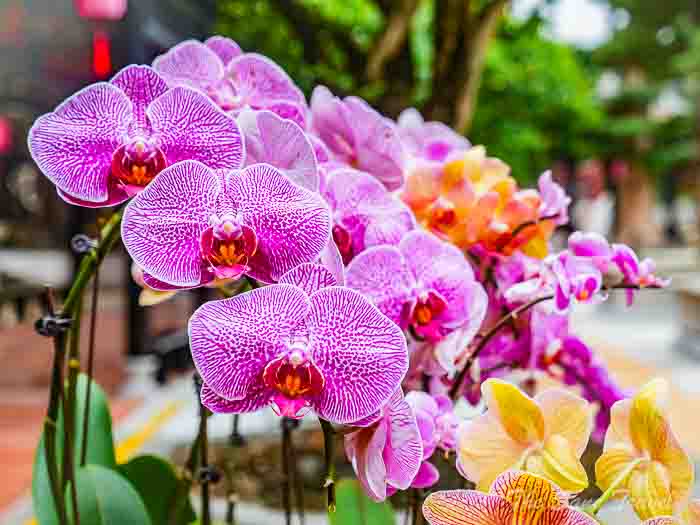
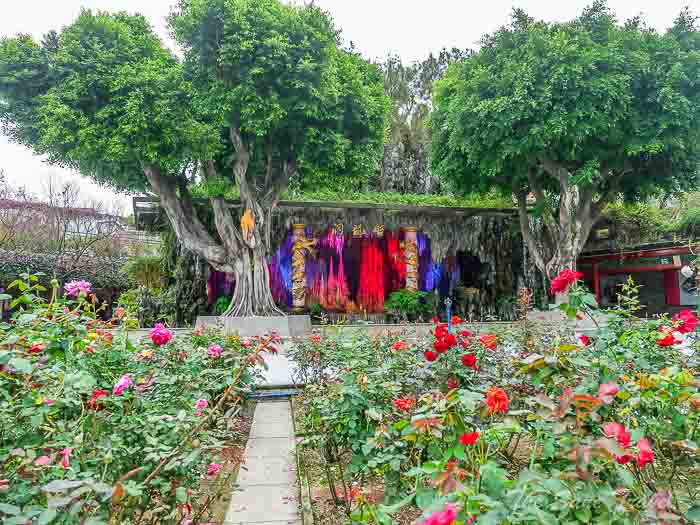
 Visitors can also explore the Zhiben Hall, which features a stunning lotus flower painting, and the Baomo Hall, where a portrait of Lord Bao by the renowned artist Han Yunlang is displayed. The Longtu Hall showcases intricate carvings and sculptures, including a large rosewood screen and a statue of Lord Bao. The garden boasts several water bodies, including Qingping Lake and a river connecting various lakes. Visitors can sample Panyu street food specialities, such as ginger milk and fish skin dumplings, each offering a unique taste.
Visitors can also explore the Zhiben Hall, which features a stunning lotus flower painting, and the Baomo Hall, where a portrait of Lord Bao by the renowned artist Han Yunlang is displayed. The Longtu Hall showcases intricate carvings and sculptures, including a large rosewood screen and a statue of Lord Bao. The garden boasts several water bodies, including Qingping Lake and a river connecting various lakes. Visitors can sample Panyu street food specialities, such as ginger milk and fish skin dumplings, each offering a unique taste.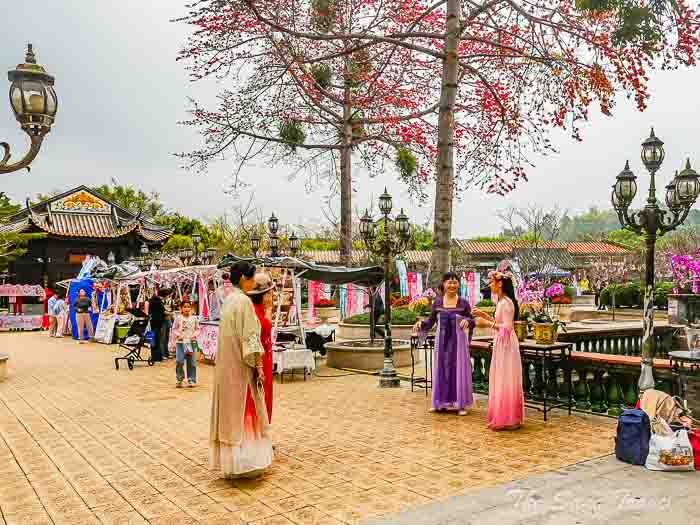
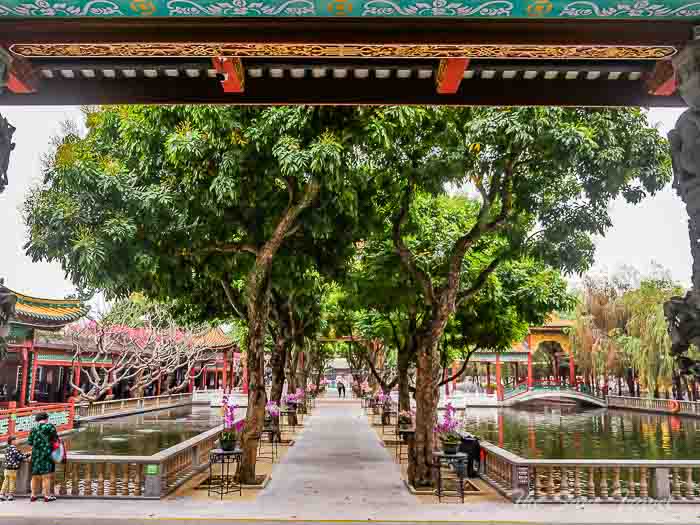
Hall of Ruling Foundation
This hall was built in tribute to Bao Gong, a respected official and politician of the Northern Song dynasty (960–1127). A Chinese painting titled Lotus Flower hangs prominently at the centre of the hall, symbolising Bao's noble character. An accompanying couplet highlights his integrity and legacy as an esteemed official. On the right side of the hall stands a wooden tablet inscribed with the characters "Baomo Garden", crafted from wood unearthed in a Western Han tomb. At the rear of the hall, a granite tablet also bears the inscription "Baomo Garden", serving as the sole surviving artefact from the original garden.
Baomo Hall and Longtu Hall
These two buildings were built in honour of Bao Gong. Inside Baomo Hall hangs a portrait of Bao dressed in red official attire, symbolising his integrity. In stories, legends, and traditional plays, Bao is often portrayed with dark skin – an artistic choice that represents seriousness, honesty, and fairness.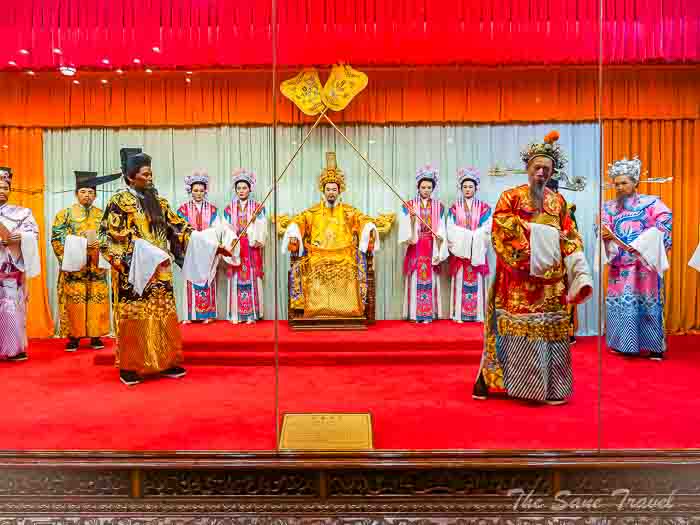
Statue of Avalokitesvara
The white marble statue of Avalokitesvara, often regarded as one of the manifestations of the Buddha, was created in 1996 and modelled on the original statue that once stood in Baomo Garden. The original statue, dating back to the late Qing dynasty and early Republic of China, was one of the garden’s key attractions, along with the Bao Gong Hall and the surrounding natural scenery. Standing over one metre tall, the original grey sculpture depicted Avalokitesvara barefoot on a rocky mountain, holding a water bowl from which water cascaded gently. Sadly, the statue was destroyed when the garden was demolished. The current two-metre tall statue, also barefoot and holding a water bowl, radiates a serene and dignified presence.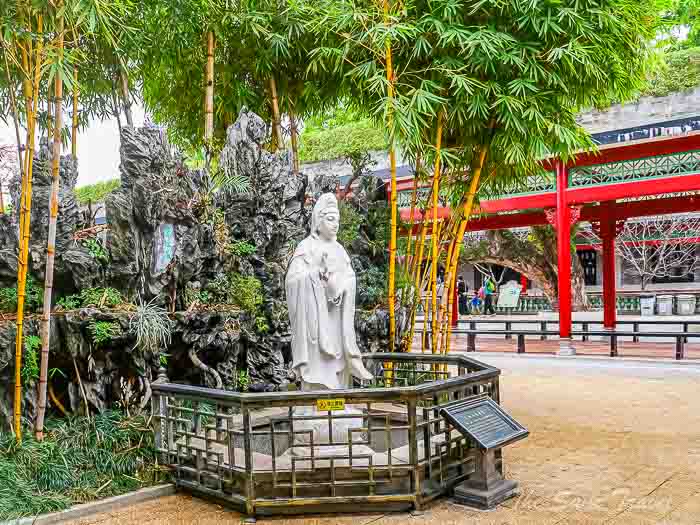
Porcelain mural
The large painted relief porcelain mural Along the River During the Qingming Festival is a prised possession of Baomo Garden and holds a place in the Guinness World Records. It depicts daily life during the Song dynasty in the capital, Bianjing (now Kaifeng, Henan). The mural showcases the festive atmosphere and lively street scenes of the Qingming Festival, featuring various shops, watchtowers, moats, and bridges bustling with people from different backgrounds, along with horses, camels, and carts. In total, the mural features 814 people, 28 boats, 60 animals, 30 buildings, 20 vehicles, 9 sedan chairs, and 170 trees.

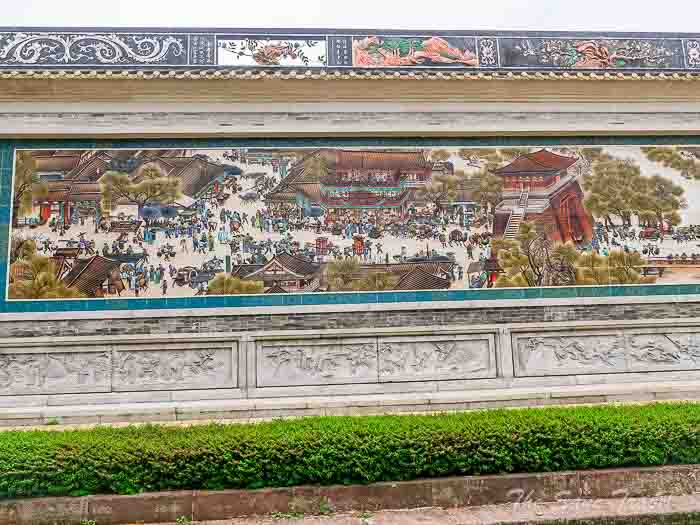
Zhao Tailai Collection Hall
The Zhao Tailai Collection Hall is dedicated to Mr Zhao, an honorary director of the garden who generously donated a variety of unique artworks. Built in the traditional temple style of the late Qing dynasty from the Pearl River Delta, the hall displays 1,600 items donated by Mr Zhao, such as a bronze statue of Kwan-yin, horse statues, 41 large Tibetan Thangkas, and ancient jade artefacts.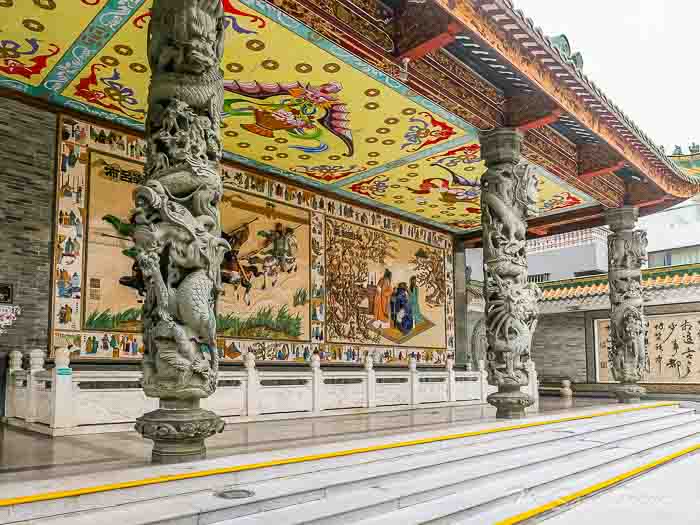
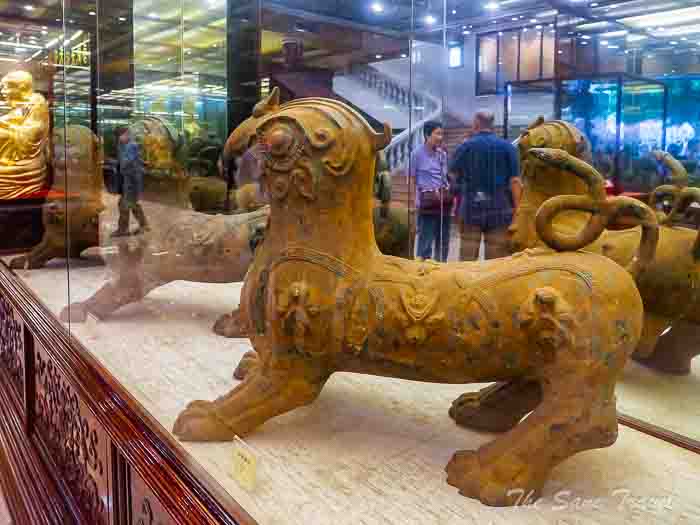
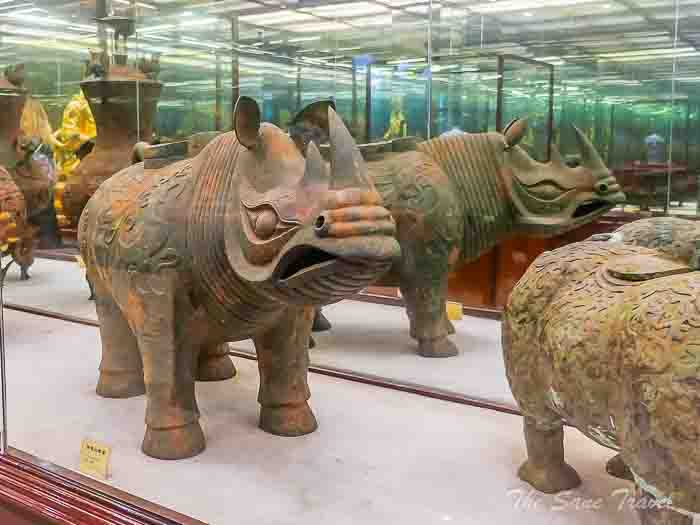

Qianxiang Corridor
The extensive hallway in Baomo Garden was built using traditional Chinese construction methods, with wooden crossbeams, columns, dougong, and arched dark tiles. Stretching over 1,300 metres, the corridor connects various structures in the garden, providing convenience for visitors while offering a pleasant spot to rest and enjoy the scenery.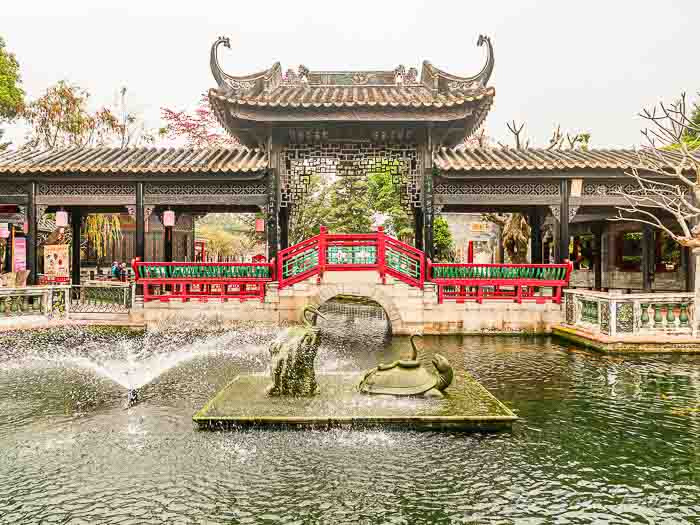
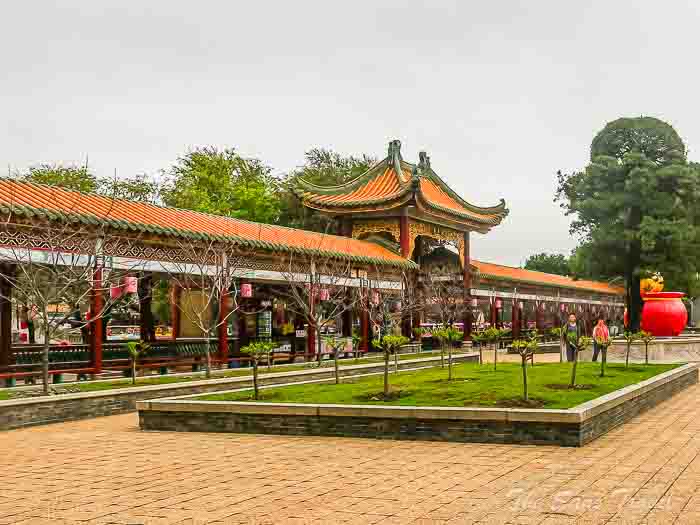
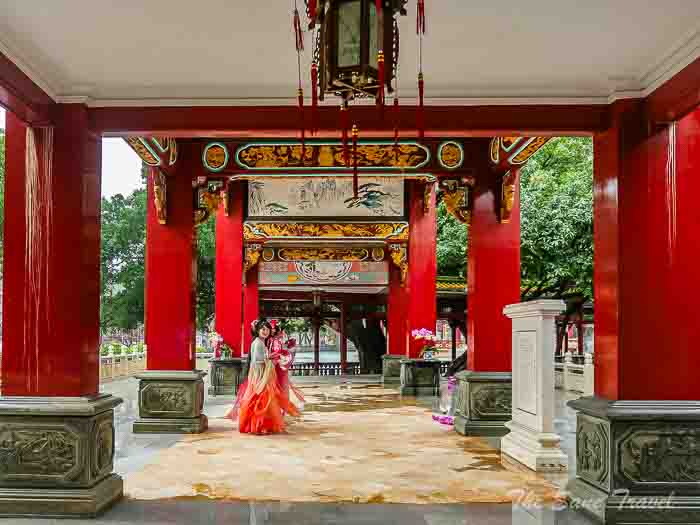
Zilai Memorial Arch
The arch is positioned in the central area of the garden and is constructed from white stone. The base of the arch features twelve animals representing the Chinese lunar years, along with images of the Eight Immortals of Daoism, all crafted from granite. Flanking the arch are a pair of stone lions at the front and a pair of mythical auspicious beasts, known as Kylin, at the back. This structure symbolises the integrity and nobility of honest government officials.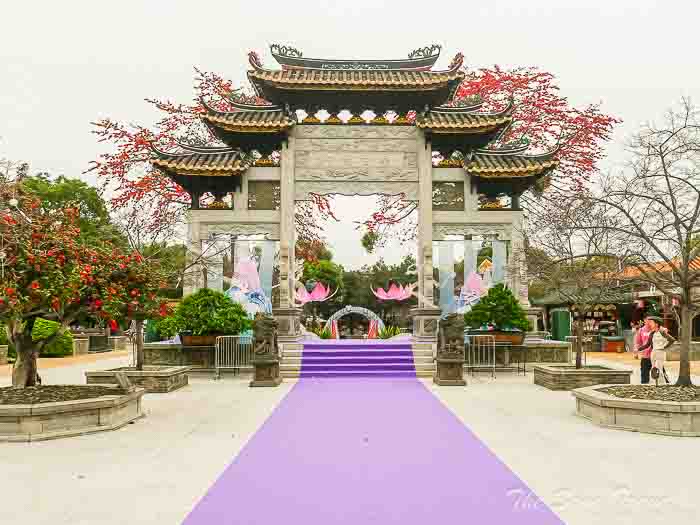
Bridges in Baomo Garden
There are 30 bridges spanning the waterways, with notable examples such as the Nine Dragon Bridge and the Purple Ribbon Bridge. The Nine Dragon Bridge is a replica of the Jinshui Bridge in Beijing’s Tiananmen Square. The Purple Ribbon Bridge, meanwhile, is a classic stone structure with nine arches. Another remarkable bridge is the Zidai Bridge, a white stone structure with nine arches that spans Qingping Lake, resembling a vibrant rainbow stretching across the water. From afar, it offers picturesque views, and its railings are adorned with over 30 intricately carved stone sculptures depicting scenes from historical novels, showcasing exceptional craftsmanship.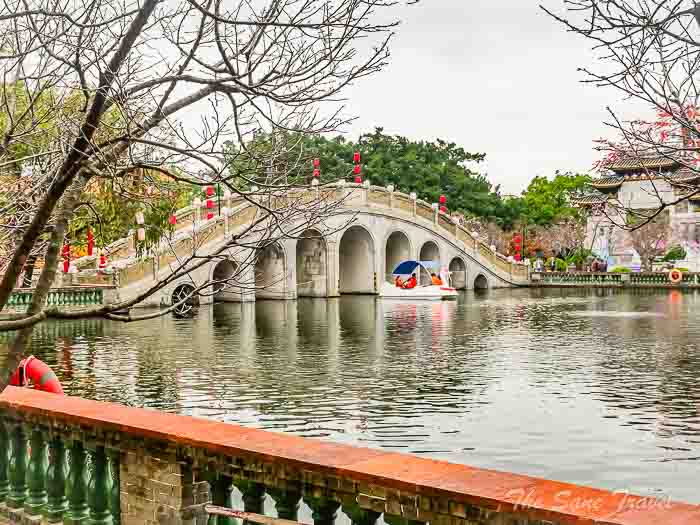
Zidong Boat
The Zidong Boat, situated on Qingping Lake, is a spacious stone vessel adorned with teak furnishings. A prime example of the boats common to the Pearl River Delta, it features lavish decorations, dining tables at the front, and a kitchen at the rear. These pleasure boats were especially popular during the Ming and Qing dynasties, initially owned by wealthy individuals before evolving into floating tea houses. Guests can enjoy tea service on the upper deck of this two-storey vessel while witnessing live performances of traditional local music.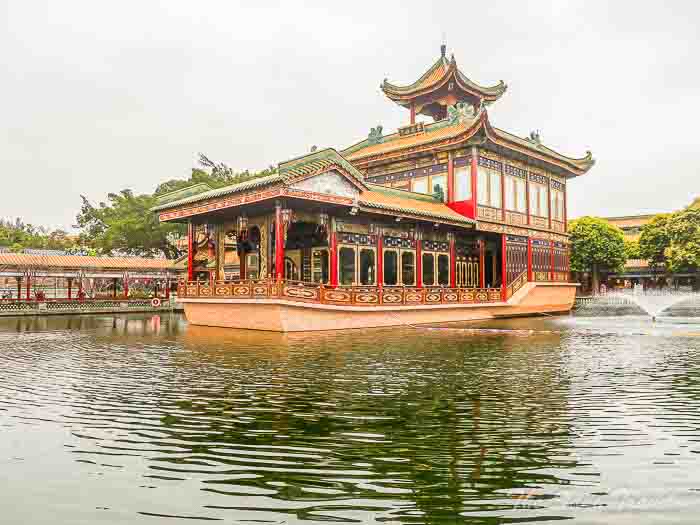
Lotus pond
To the east of Baomo Garden lies Lotus Wonderland, home to a lotus pond spanning over 1,000 square metres and showcasing both summer and autumn lotus varieties. At the centre of the pond stands a golden statue of the seated Goddess of Mercy, Guanyin. Surrounding the pond is a cloister adorned with a vibrant array of blooming flowers.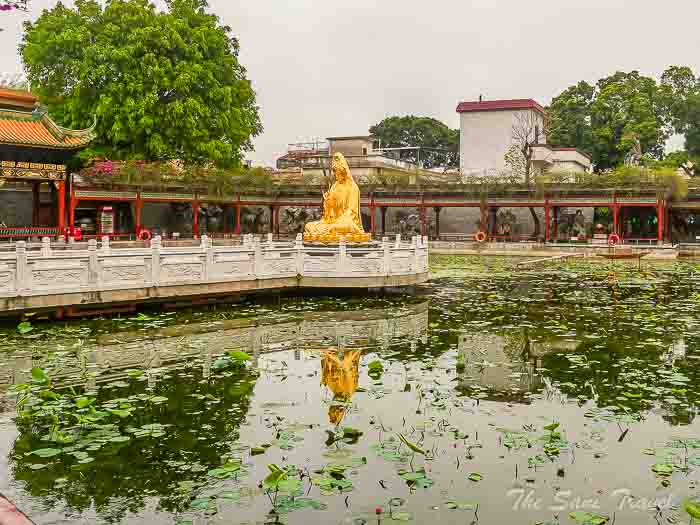
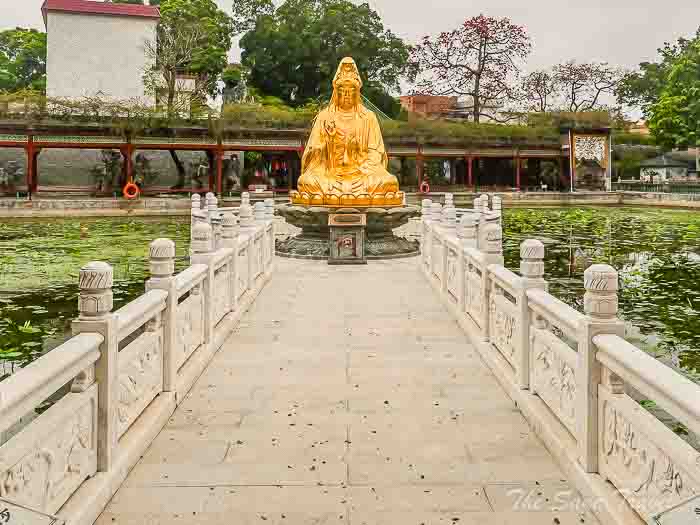
Golden statue of Monkey King
The striking statue of the Monkey King of Huaguoshan and his kingdom is a popular attraction, admired for its vibrant colour and intricate design. Huaguo Mountain is famously known as the birthplace of the Monkey King, as depicted in the classic Chinese novel Journey to the West. The early chapters of the novel tell the tale of a monkey born from a stone egg and its eventual mastery of magical abilities.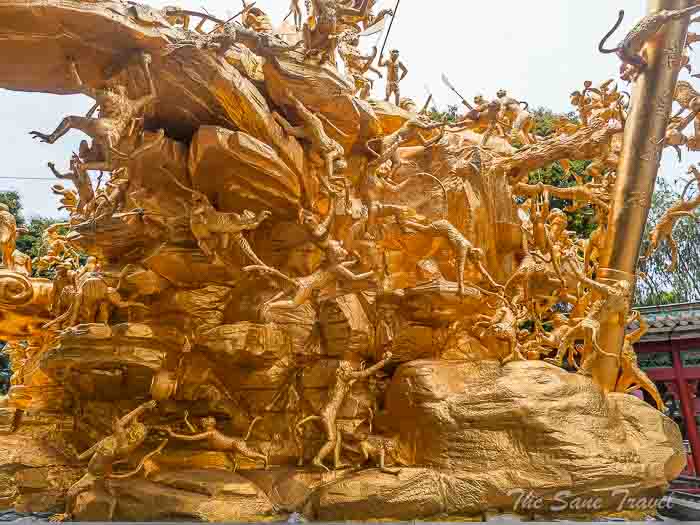
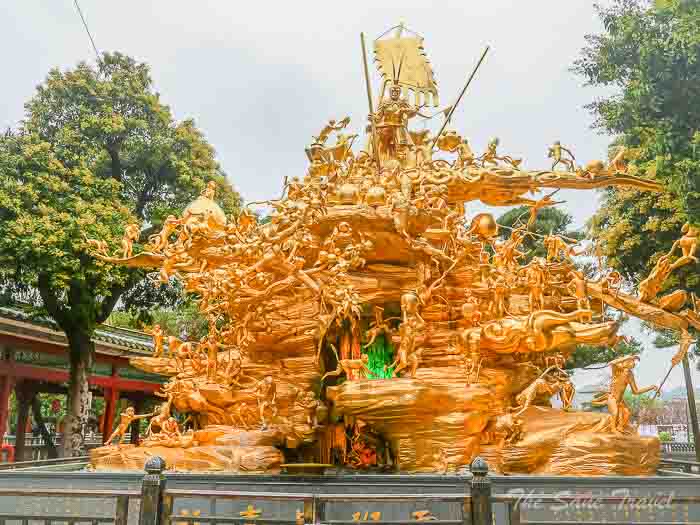
Baomo Garden is also home to a diverse collection of fish in its ponds and aquariums, with koi fish being the most abundant.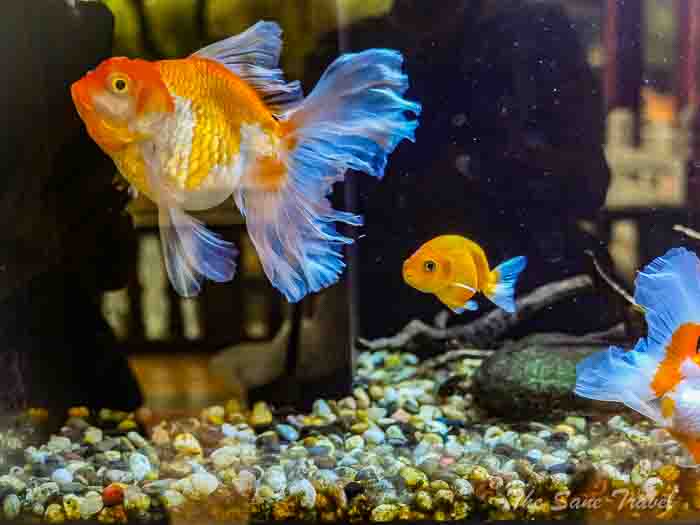
Koi fish
Koi, originally a type of red carp, gained popularity as an ornamental fish during the Ming dynasty in China. The species was later introduced to Japan, where it was extensively bred, resulting in the development of over 100 different varieties. In 1973, Japanese koi were brought to China as a symbol of friendship between the two nations. Today, koi are regarded as a prestigious species worldwide, known for their vibrant colours, intricate patterns, and graceful swimming. Koi require minimal maintenance, have a diverse diet, and are relatively easy to breed, making them a popular choice among fish enthusiasts. Believed to bring good luck and prosperity, koi are cherished as a symbol of fortune and are highly sought after both as a Feng Shui symbol and a decorative pet.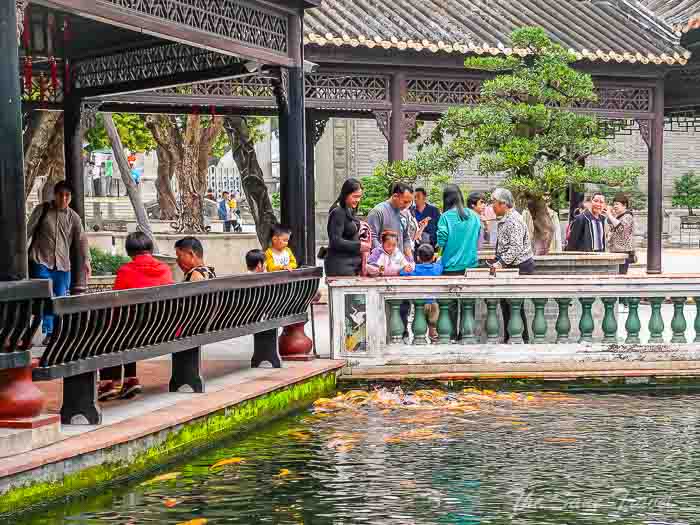

Chinese herbal medicine shop
I discovered a unique shop in the garden that sells Chinese herbs for healing purposes. Visitors can observe, smell, and learn about the therapeutic properties of various herbs, as well as purchase different herb blends for treating various ailments.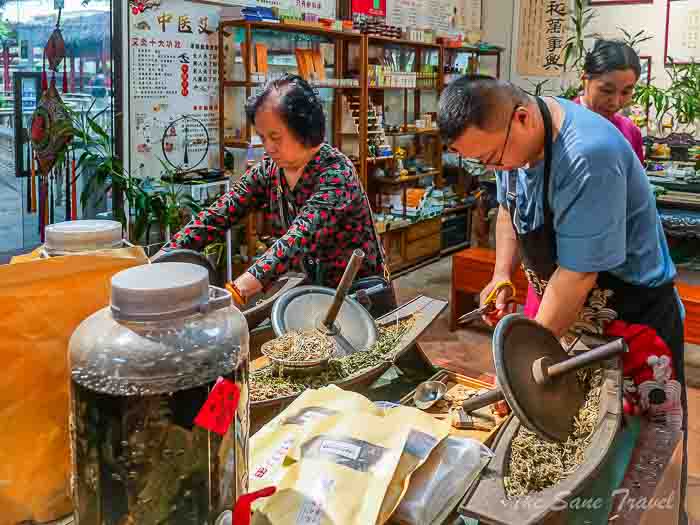
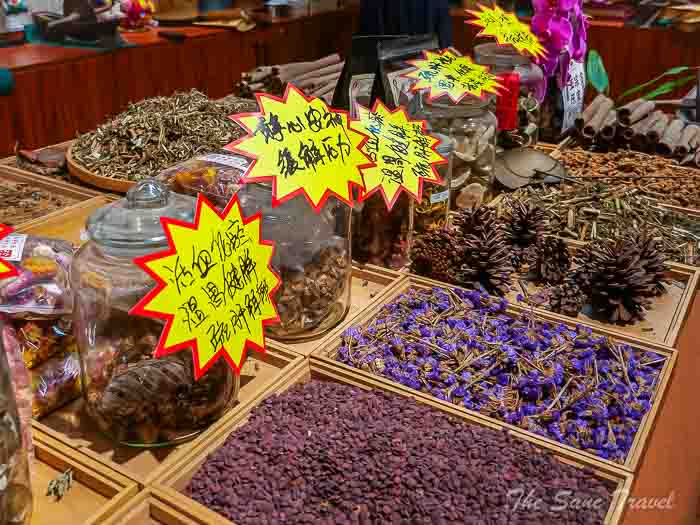
How to get to Baomo Garden
Baomo Garden is located approximately 35 kilometres from Guangzhou. The most convenient way to reach the garden is by using the ride-hailing service Didi. Alternatively, visitors can choose from several public transport options, including a direct bus from Guangzhou Bus Station to the garden. Another option is to take Metro Line 3, get off at Shiqiao Station, and then transfer to bus Pan 12 or 67.
Practical information
Seniors 65 and over receive complimentary admission. If you meet the eligibility criteria, please have your passport available to present at the ticket office.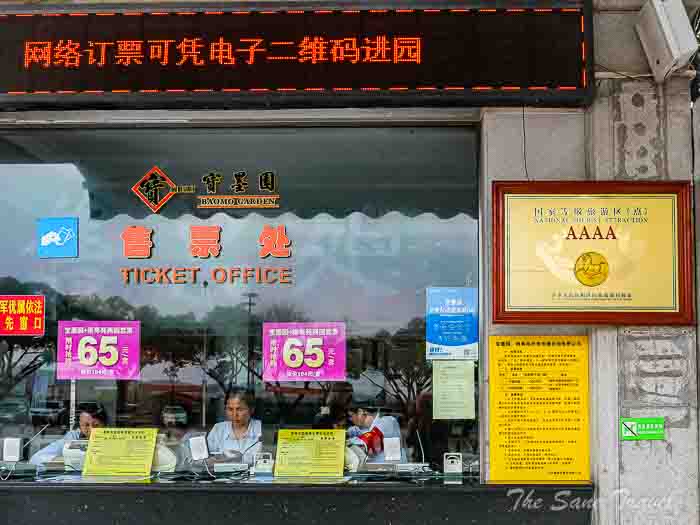 Plan to spend at least three to four hours exploring Baomo Garden. If you are hungry, there is a large restaurant on-site.
Plan to spend at least three to four hours exploring Baomo Garden. If you are hungry, there is a large restaurant on-site.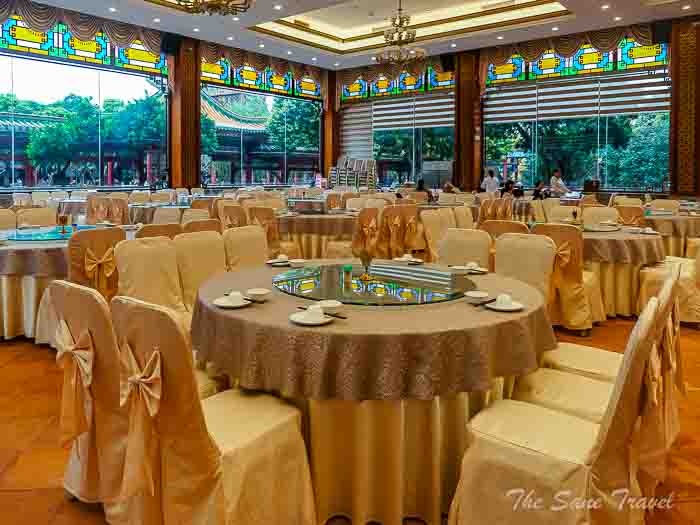 Additionally, there are several shops where you can purchase souvenirs to commemorate your visit. If you plan to stay overnight in Guangzhou, I recommend the Guangzhou Garden Hotel.
Additionally, there are several shops where you can purchase souvenirs to commemorate your visit. If you plan to stay overnight in Guangzhou, I recommend the Guangzhou Garden Hotel.
Like it? Pin it!
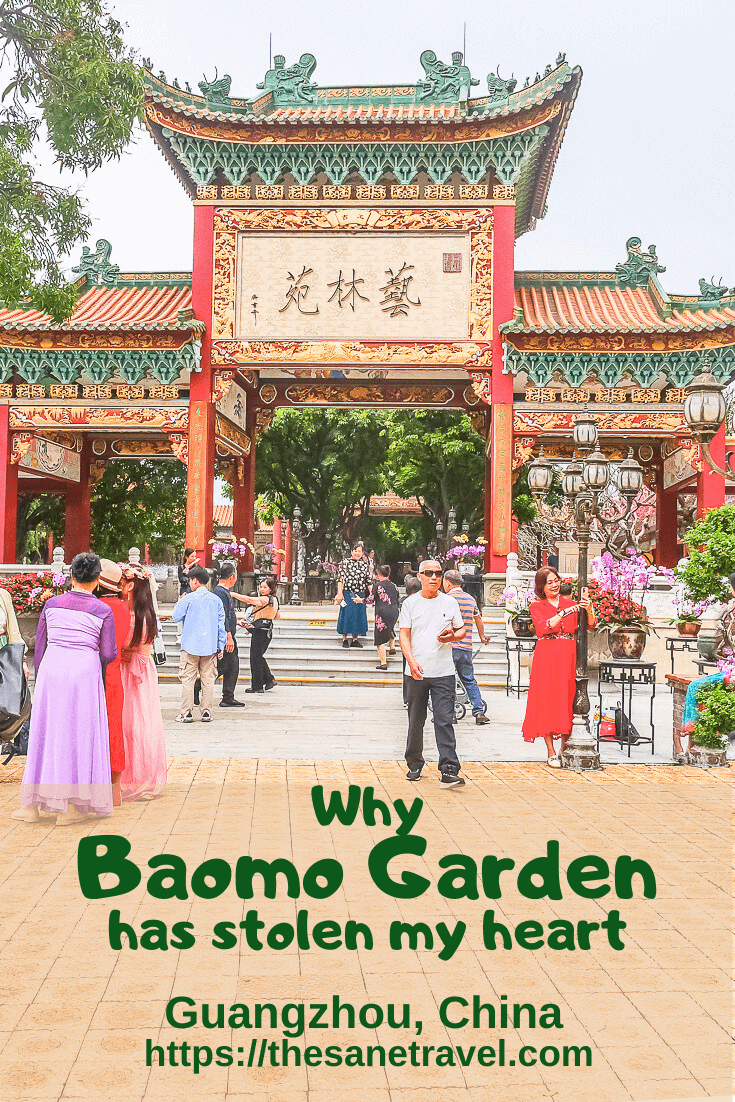
What did you think? Have you been to Baomo Garden? I would love to hear from you, so please add your comment below.
Author: Anita Sane

About the author
Anita is a part-time traveller, passionate photographer and a retired career woman from Latvia, travelling mostly solo for more than 15 years. She is a skilled travel planner who plans and executes her travels by herself. Anita wants to show you how to travel the world and open your mind to new experiences. Follow her on Facebook, Instagram, Pinterest, Twitter and Bloglovin.

Report
My comments